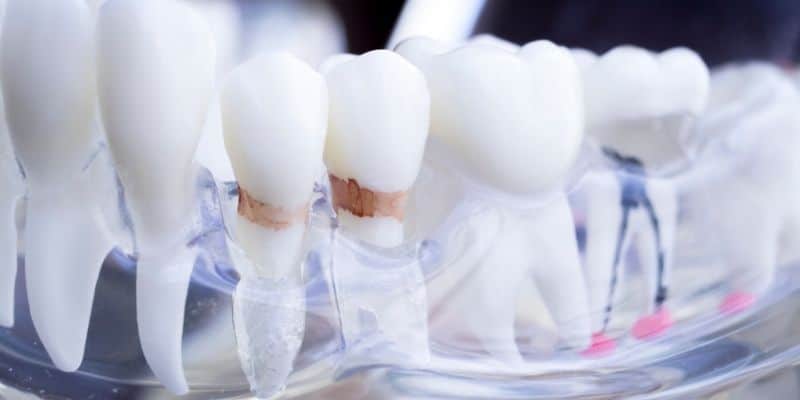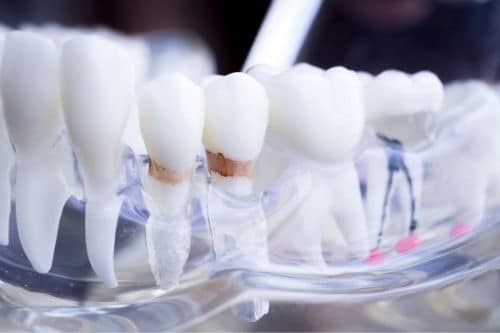You might have come across the term “root canal” at your dentist’s office, or maybe from a friend or colleague, but do you know what exactly it is?
A root canal can be used to define both the inner intricate system of the tooth inside the pulp and tooth roots and to the dental procedure in which infected pulp tissue is removed to relieve root canal pain.
The dental pulp is a vital tissue containing an intricate network of nerves and blood vessels.
The purpose of the nerve is to conduct sensation of heat, cold, and other stimuli. Removing this inflamed, infected nerve is part of a root canal procedure to achieve relief from the pain caused by decay or infection in the tooth pulp.

When Is A Root Canal Procedure Required?
- When the dental decay has penetrated the outer layers of the teeth. and reached the pulp, causing irreversible inflammation of the pulp tissue.
- Any chip or crack in a tooth allowing bacteria inside the dental pulp.
Risk factors for infection in the tooth pulp include severe dental decay, trauma to the face or tooth, large fillings, and cracks or chips in the teeth.
Signs That Indicate You Might Need A Root Canal Treatment
- Severe, unbearable tooth pain that increases on eating or when you put pressure on the area
- Lingering pain and sensitivity to hot or cold foods and drinks
- Tenderness or swelling at the site of the affected tooth
How Much Does a Root Canal Cost?
Although a root canal procedure is a bit more expensive than having a tooth removed, you can rest assured it is the right choice. There are 2 reasons for that:
- Sometime in the future, you will need to replace the extracted tooth with an implant, bridge or denture, and that will cost you a lot more than if a root canal was done in the first place
- An artificial restoration like an implant, bridge or a denture can never compare to a natural tooth
Root Canal Procedure and Treatment Steps
A root canal treatment procedure involves 2 main steps
- Removing inflamed, infected tooth pulp
- Cleaning and sealing the space to protect it against pain and bacterial invasion.
-
- Your dentist will take an x-ray to assess the extent of the infection.
- A local anesthetic or iv sedation will be given to numb the area and prevent any pain during the procedure. Your dentist will remove some tooth structure to get access inside the tooth and remove the damaged nerve and pulp tissue using special tools.
- The dental filling material is then used to seal the tooth to prevent any future bacterial invasion.
If you are suffering from a root canal, you can schedule an appointment with our office today.
You can contact us at (813) 684-7888 or fill out a contact form, and we’ll be glad to help in any way we can.





